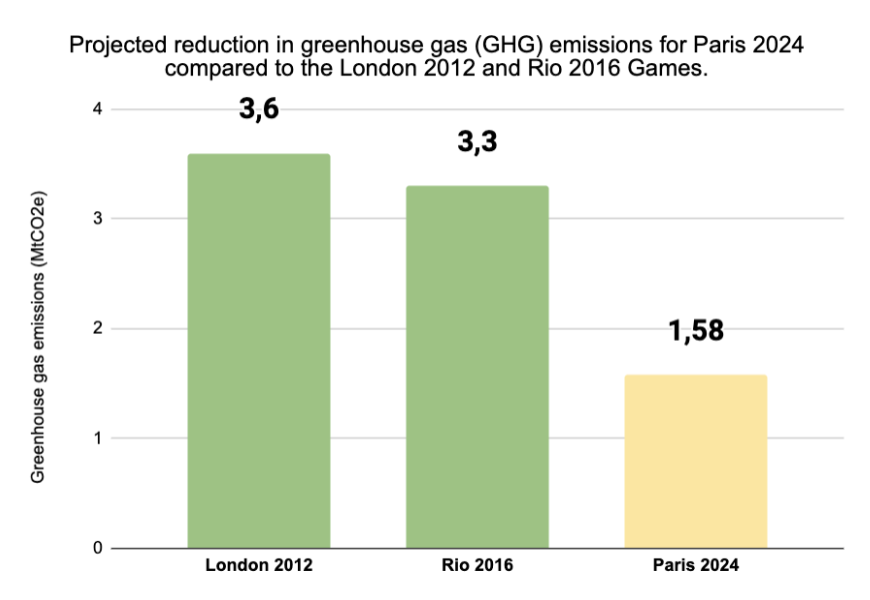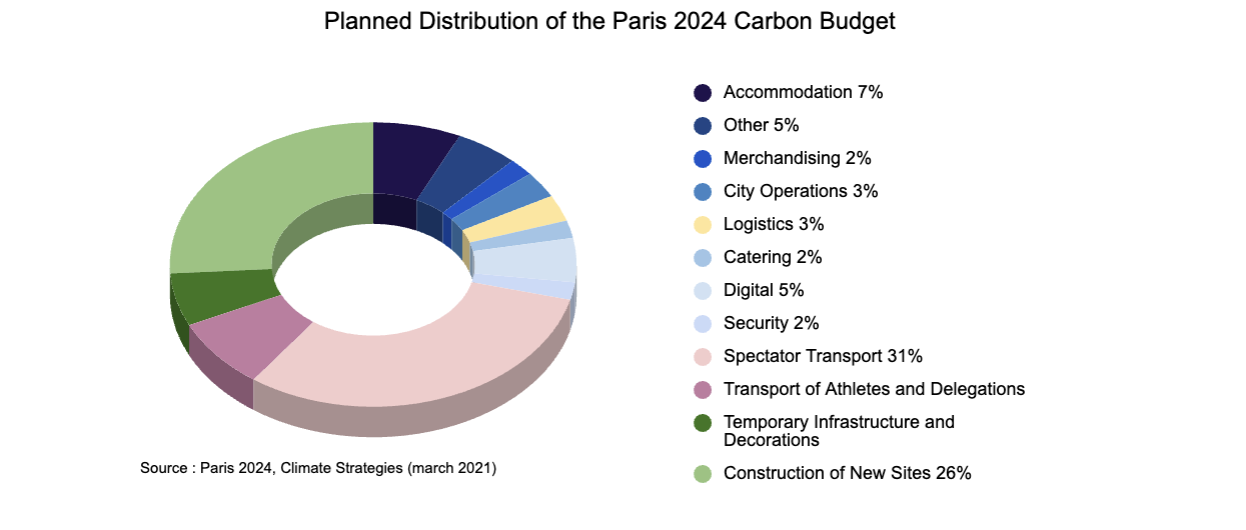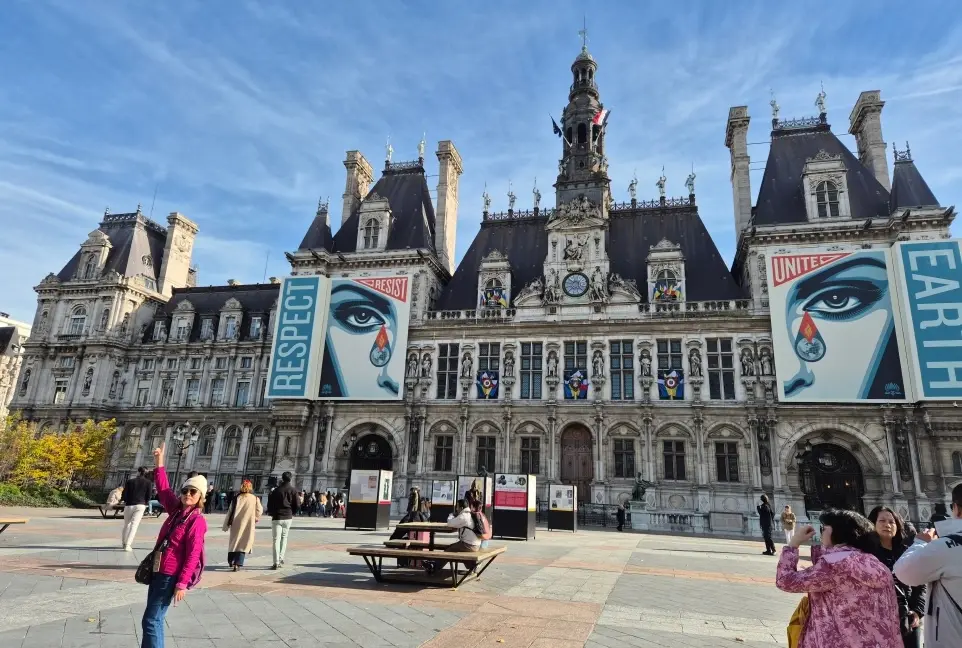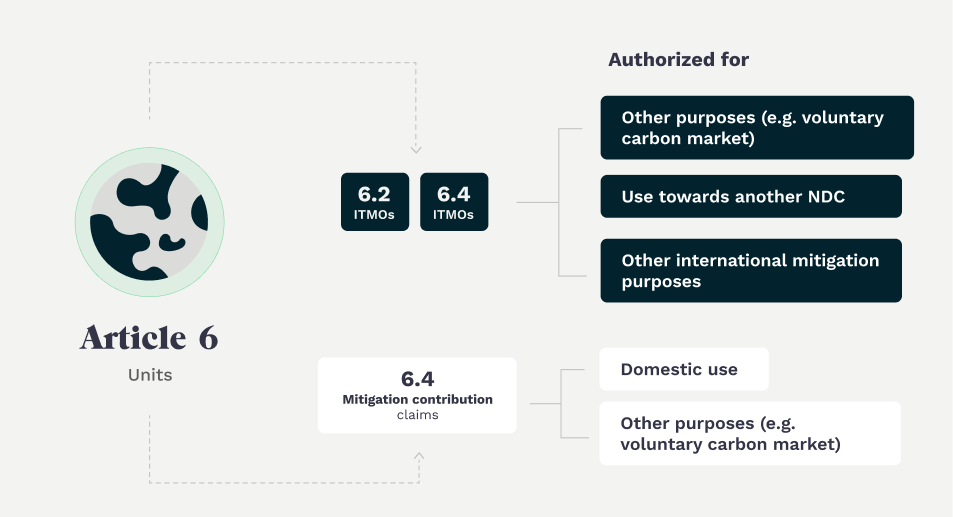Paris 2024: Olympic Games aligned with the Paris Agreement?
Table of contents
Introduction
The Intergovernmental Panel on Climate Change (IPCC) recommends a 43% reduction in global greenhouse gas emissions by 2030 to mitigate the most severe impacts of climate change. In response, the Paris 2024 Games have adopted an ambitious climate strategy.
Paris 2024 has set a carbon budget and estimated its carbon footprint ahead of the event. The final calculation of emissions is expected after the Games. This approach is in line with the recommendations of the 2023 OECD report titled "How to Measure the Impact of Cultural, Sporting, and Commercial Events," which advocates for the adoption of an event evaluation strategy to define the expected impacts upfront, with clear and measurable objectives.
Paris 2024 has joined the United Nations initiative "Sport for Climate Action" and aims to set a new standard for sustainability in mega sporting events, with the goal of reducing CO₂ emissions by 50% compared to previous editions. However, comparing Paris's emissions with those of previous Olympic Games is challenging due to different calculation methodologies.

Source: International Olympic Committee (2024).
Despite this ambitious goal, the Paris 2024 Olympic Games are projected to generate 1.58 million tonnes of CO₂ equivalent, comparable to the annual emissions of more than 170,000 French households (Carbon Market Watch 2024). Due to significant emissions, the reduction measures adopted may not be sufficient to align the Olympic Games with the 1.5-degree Celsius climate goal recommended by the IPCC.
The event, which will involve more than 14,000 athletes from 388 delegations, 13 million spectators, and 45,000 volunteers, focuses on circular economy principles and the use of 95% existing or temporary venues to minimize environmental impact and reduce distances between Olympic sites to minimize transportation needs.
Key indicators for the Paris Games:
- 4,350 Paralympic athletes
- 10,500 Olympic athletes
- 182 Paralympic delegations
- 206 Olympic delegations
- 13 million tickets sold
- 39 Olympic competition venues
- 18 Paralympic competition venues
- 40,000 meals served daily
- 45,000 volunteers
- 2,600 accredited media and personnel
Source: Report - "Legacy and Sustainability Strategy" of Paris 2024
.png?width=960&height=540&name=Pr%C3%A9sentation%20sans%20titre%20(2).png)
Source: Paris 2024, Activity Report 2022
.png?width=960&height=540&name=Pr%C3%A9sentation%20sans%20titre%20(3).png)
Source: Paris 2024, Activity Report 2022

Source: Paris 2024, Climate Strategies (March, 2021)
Regarding the Olympic infrastructures, 95% of the venues used will be existing or temporary to avoid new construction.
The Paris 2024 strategy plans to use 95% existing or temporary venues (70% existing competition venues and 25% temporary venues) to avoid new construction. Organizers have committed to reusing, repurposing, or recycling the materials and structures used for these venues. For the construction of new sites, bio-based materials, including wood, will be used, reducing the use of virgin materials through the reuse or recycling of existing materials.
Only two new buildings are planned. The Athletes' Village, for 14,000 people, uses low-emission materials and innovative technologies, reducing CO2 emissions by 30%. The Aquatic Center integrates solar panels and heat recovery systems. The temporary structures will be reused or recycled, thus reducing movable elements by 25%. After the Olympic Games, the spaces will be transformed into housing for 6,000 residents and offices for 6,000 workers.
Sustainable energy and purchasing materials from suppliers adhering to sustainability criteria to reduce resource use.
Paris 2024 has required commercial partners and suppliers to adhere to sustainability criteria, following guidelines aimed at minimizing resource use before, during, and after the Games. This has reduced movable elements by 25%, from 800,000 to about 600,000. Three-quarters of the sports equipment and more than 75% of the electronics will be rented. Additionally, 90% of the six million assets will be reused by partners, with second-life projects planned for the remaining 10%. These actions are supported by the use of sustainable energy sources such as biofuels, hydrogen, and batteries instead of diesel generators.
Competition venues within 10 km of the Olympic Village to reduce travel and promote accessibility.
Transport remains the most challenging aspect to reduce, representing 40% of total emissions. 80% of the venues are within 10 km of the Olympic Village, reducing travel. Paris 2024 aims to encourage public transport, cycling, or walking, and has also planned a fleet of low-emission vehicles, reduced by 40% compared to previous editions. More than 50 km of new bike lanes have been created, and public transport services have been improved by 15%.
Air traffic remains an unsustainable issue, accounting for 40% of total emissions, with 30% attributable to spectators alone. The 13 million expected visitors, including 1.9 million foreigners and at least 850,000 on long-haul flights, generate significant CO₂ emissions. Despite organizers' efforts to reduce the impact, air transport has not been significantly regulated. This challenge will require rethinking logistics for future editions, favoring low-emission transport modes like trains.
Agreement with Nobel Peace Prize winner Yunus for an inclusive and solidarity-focused event with 50 million euros invested in social projects.
From an environmental perspective, it is still too early to assess the actual impact of the initiatives undertaken and their alignment with the Paris Agreement goals. However, these Olympics represent significant social progress. Through an endowment fund, more than 75 projects have been supported to combat physical inactivity and improve access to sport. Additionally, more than 160 projects using sport to promote inclusion, equality, and solidarity have been supported. The organizers have also invested 1 million euros to reduce inequalities in access to sport and healthcare in disadvantaged neighborhoods in the Paris region. Paris 2024's evaluation approach aligns with international recommendations to assess the social impact of sport. This reflects the 15 recommendations of the IOC's Agenda 2020+5, the United Nations' 17 Sustainable Development Goals (SDGs), and the OECD's guidelines for organizers of global cultural, sporting, and commercial events.

Source: Paris 2024
Sources:
International Olympic Committee. (2024). Carbon Neutral Games: How Paris 2024 is Setting New Standards for Sustainability.
Paris 2024. (2024). Assessing the Social Impact of Paris 2024.
Paris 2024. (2022). Presentation of the Assessment Strategy of Paris 2024.
Paris 2024. (2023). Paris 2024 Activity Report 2022.
Carbon Market Watch. (2024). Going for Green: A Closer Look at the Environmental Impact of the Olympic Games.
Share this
You May Also Like
These Related Stories

What to remember from the exhibition From Paris to Belém: 10 Years of Global Climate Action

Understanding Blue Carbon & Mangroves' Role in Carbon Sequestration


